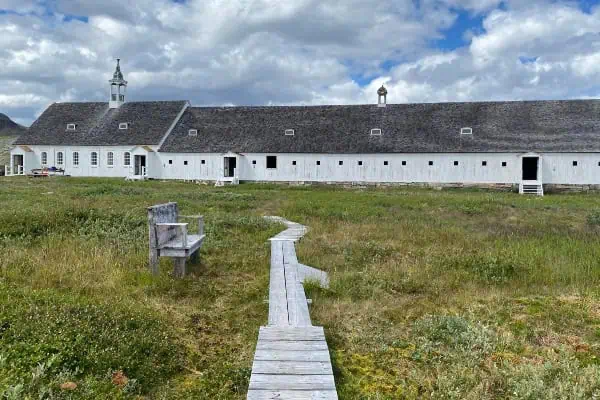Ice-patch melt is speeding up the search for cultural artifacts before they deteriorate or disappear
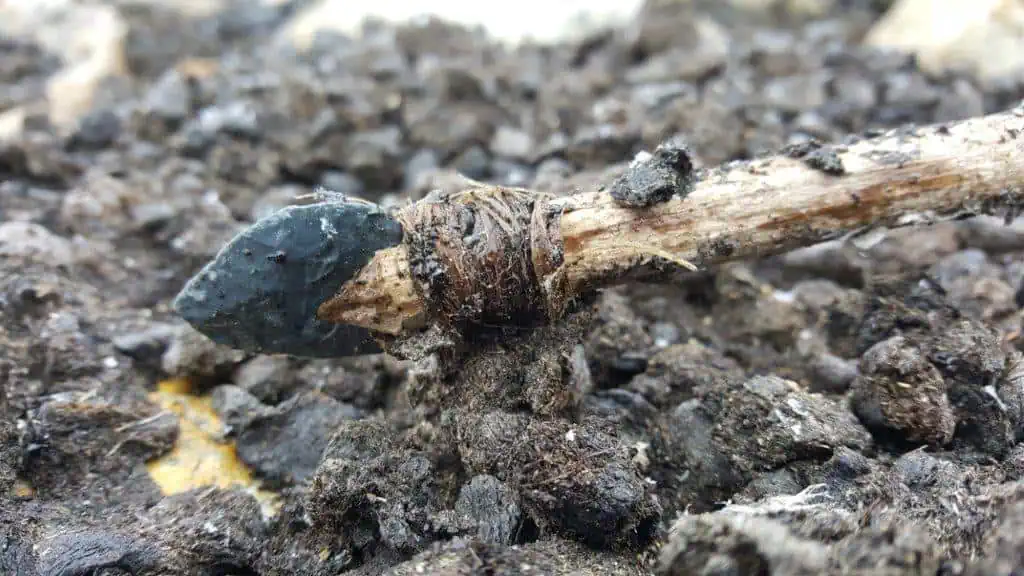
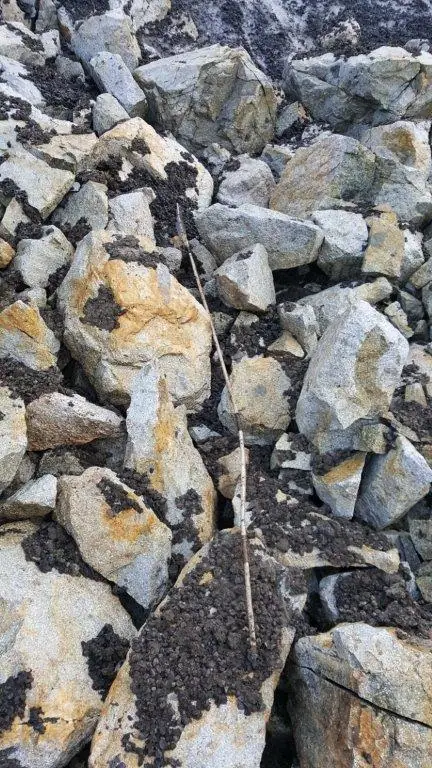
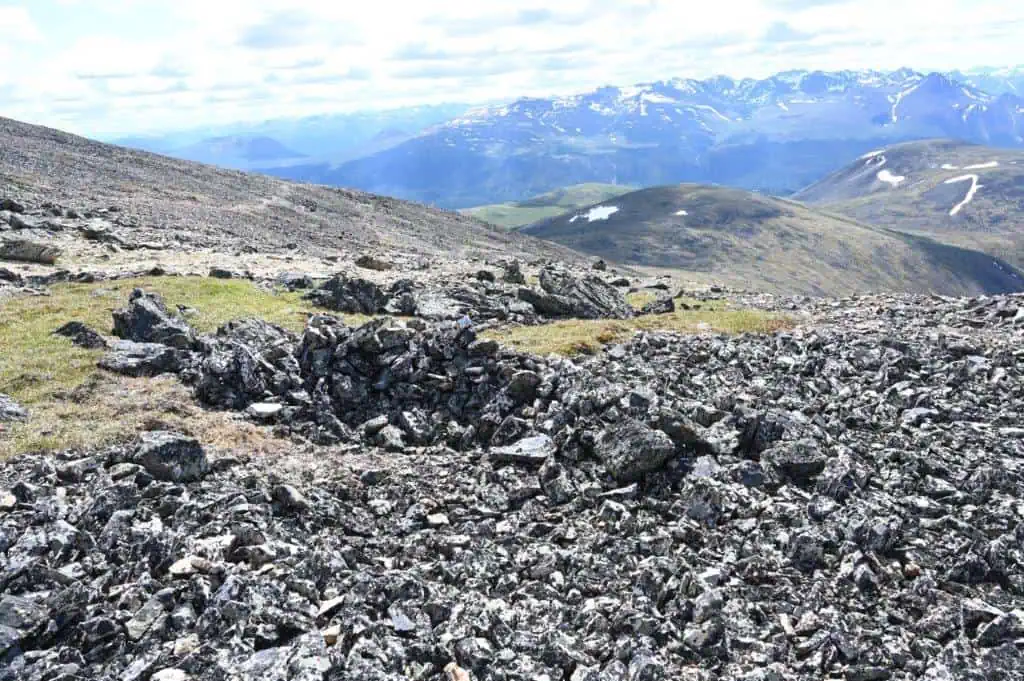
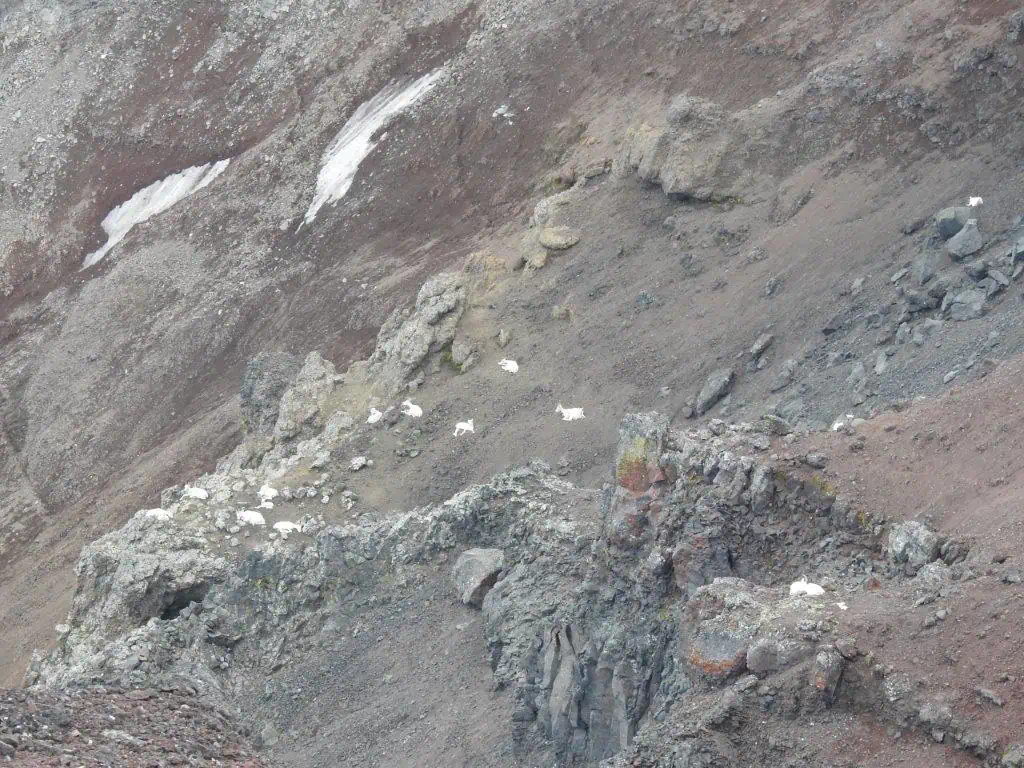
On a Saturday in late August 2018, with just a half-hour left in their helicopter budget for the season, the Yukon government and Carcross/Tagish First Nation (C/TFN) archaeologists decided to revisit the Friday Creek ice patch near Alligator Lake, one last time before the snow came.
Moments after landing on-site, they found the ice had melted back about three metres, revealing a long, wooden throwing dart perched on stones and caribou dung.
It was the most-complete atlatl (a type of ancient throwing dart) ever found on a Yukon ice patch, and it was in nearly perfect condition. The shaft was two metres long and was made from three segments of birch tied together with sinew. Its stone point and the eagle feathers in its fletching were still firmly attached. Radiocarbon dating found it was 6,000 years old.
“If we had not gone up on that trip and that atlatl had been left exposed for an entire season or perhaps longer, it could have been lost very quickly, very easily,” said Jennifer Herkes, an archaeologist and anthropologist who has worked on ice patches, with C/TFN, for seven years.
Ice patches in the southern Yukon are a component of traditional hunting landscapes. For millennia, animals such as caribou, bison and sheep have headed to the alpine to forage and escape the bugs and heat of summer. Up to the late 1800s, hunters followed those animals up to the ice patches, and there they left behind evidence of their tools and technologies.
Ice patches are repositories for these ancient artifacts. Nearly 400 cultural artifacts—arrows, darts and cutting tools—and 2,500 paleontological fossils have been found and recovered from Yukon ice patches, so far.
Natural materials, such as wood, sinew and feathers, can be preserved if they’re frozen in ice for millennia. Once they melt free, they’re exposed to air, wind, rain, snow and scavenging animals, which can cause them to deteriorate quickly.
Yukon ice patches are receding due to warming temperatures and changing weather patterns. This rapid change makes finding and safely recovering culturally-significant artifacts more challenging and urgent. Archaeologists need to be on-site during the Yukon’s narrow summer window—when objects have had time to melt free of the ice and before they’re covered in snow again.
With changes in climate affecting the ice patches, governments—such as C/TFN, Yukon and other Yukon First Nations—are doing as much work as they can while there is still ice. This begins with finding the patches most likely to contain artifacts and then monitoring those places as often as time, weather and budgets allow.
“The melting is not something we can negotiate with or stop,” said Yukon government archaeologist Chris Thomas. “For the next twenty to thirty years, an ice patch is an imperilled landscape feature that’s melting away and that gives us the opportunity to retrieve these cultural artifacts that are in perfect condition.
“And I think that the important part for the First Nations involved with this, is that the difference between just a little broken stone tool and a fully formed artifact, with engraved artwork and paint and all these different materials, is quite profound.”
When the Yukon government takes a helicopter to an ice patch, there’s usually just one archaeologist on board. The rest of the seats are filled with First Nation community members, youth and Elders, so they can see the ice patches first-hand.
“There’s an aspect of collecting things, but there’s also an aspect of bearing witness and having as many people as possible recognizing what an ice patch looks like now, what it looks like when it’s gone, what it looks like a decade or two after it’s gone,” said Thomas.
“It’s about keeping people familiar with these areas that used to have a different cultural meaning. They would have been hunting sites; now they’re areas for science, education or conservation work.”
In the southern Yukon there are dozens of culturally-significant ice patches on the Traditional Territories of six First Nations: C/TFN, Kwanlin Dün First Nation (KDFN), Ta’an Kwäch’än Council, Champagne and Aishihik First Nations, Kluane First Nation and Teslin Tlingit Council. In some places, such as the Friday Creek ice patch, the territories overlap. The remarkable atlatl was found on both C/TFN and KDFN land.
Since it was recovered, the atlatl has been studied by the Canadian Conservation Institute and found to have parts coated with castoreum, an orange sticky substance produced by beaver to scent-mark their territory. It was the first time this substance was found on an ancient hunting tool.
The atlatl has also been used for cultural learning about traditional tool-making and hunting methods. C/TFN master carver Keith Wolfe Smarch created a replica of the throwing dart that now hangs in the First Nation’s Cultural Centre, Haa Shagóon Hídi – Our Ancestors House. And the C/TFN Heritage, Lands and Natural Resources Department is planning a workshop where youth can learn the skills involved in creating the throwing dart.
“It’s a way to connect to the knowledge of our ancestors,” said C/TFN heritage director Sean McDougall. “We know that in our cultural ways, we didn’t do anything without a purpose, whether it was spiritual, ceremonial or useful in our day-to-day activities. So, this atlatl really brings a lot of thought about our past heritage and the connection that we had with our surroundings.”
When Herkes started working on the ice patches, seven years ago, the team would walk the length of an ice patch looking for objects, and then leave. Now, they walk the ice patch but they also look beyond the ice-patch area to get a clearer picture of the relationships between the animals, the people and the landscape.
“C/TFN and the other nations really pushed for an expansion beyond the understanding of ice patches as just repositories for artifacts,” said Herkes. “Understanding that caribou were there to get away from the bugs, people were there because of the caribou, and what else is happening on the landscape? How were people getting there? Where were they stopping along the way? What other features tell us that story? What is the traditional knowledge and in our stories also helps support that understanding?”
For example, not far from the ice patch at Alligator Lake, they found dozens of hunting blinds and lookouts, piles of stones that were used to camouflage a hunter from their prey. These remnants suggest many hunters used the area, giving more context to the history and the stories that unfolded on these alpine landscapes.
“With the ice receding, it’s not just about the loss of heritage; it’s about a loss of relationship,” said Herkes. “Eventually, all that will be left is what we have recovered in the museums, because the ice patches won’t be there, the caribou won’t be there and there won’t be an opportunity for people to live that heritage because the relationships just aren’t there. It’s a huge loss. It’s inevitable. It is what it is.”
Find out more about the atlatl throwing dart by reading the recently published research by Thomas, Herkes and other scientific professionals at “The Alligator Lake Throwing Dart, Yukon, Canada | Journal of Glacial Archaeology (equinoxpub.com; journal.equinoxpub.com/JGA/article/view/27327).

